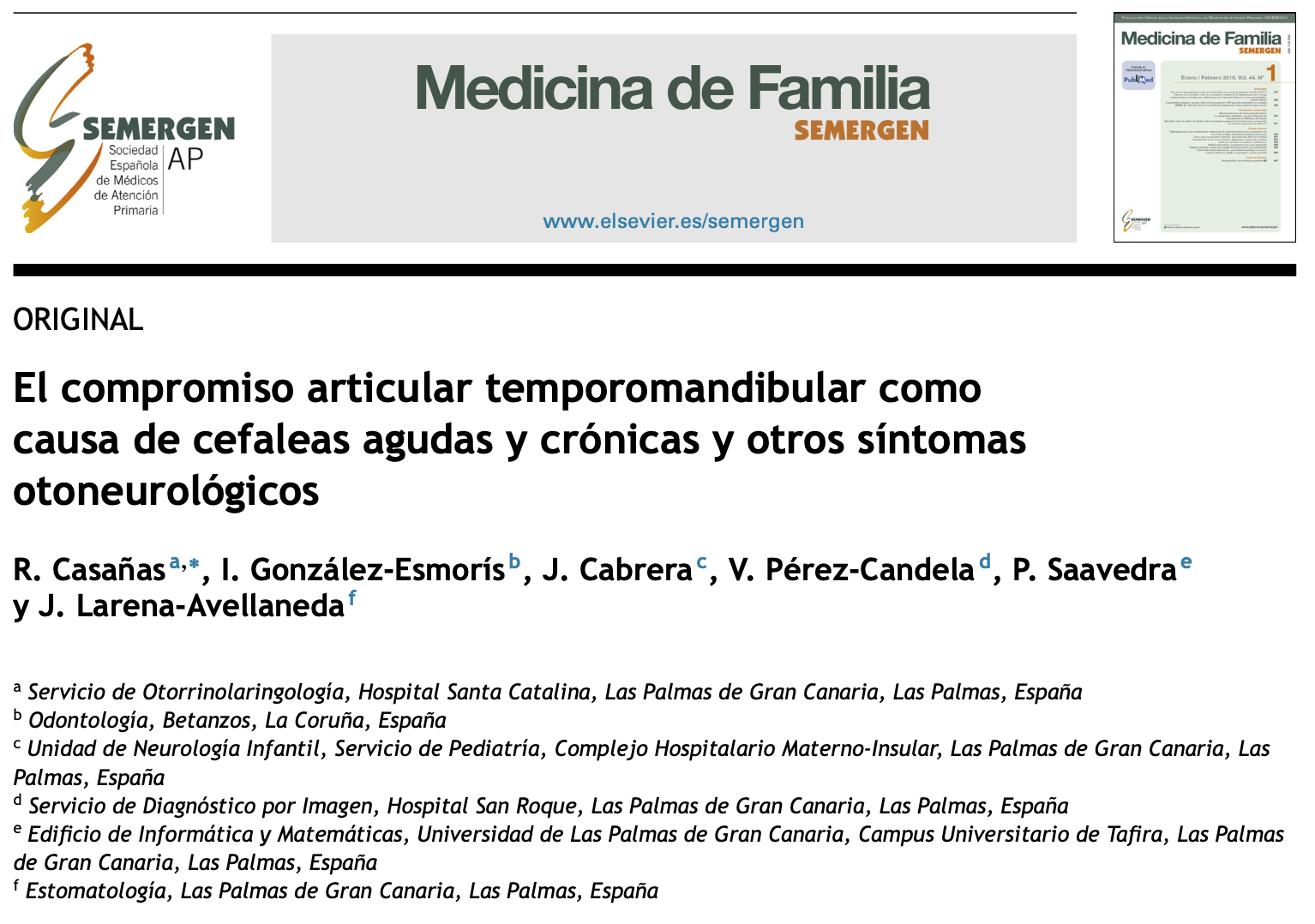
RESUMEN
Objetivos: El objetivo de este trabajo es dar a conocer una nueva entidad dentro de los tras- tornos temporomandibulares, el compromiso articular temporomandibular (CAT), enfermedad limitante del movimiento mandibular de causa traumática extraarticular, y evaluar la tasa de respuesta y seguridad del tratamiento. La causa limitante del movimiento mandibular es la falta de espacio entre la rama mandibular y el maxilar superior. Los principales síntomas del CAT son cefalea, mareo y acúfenos. En muchos casos, la cefalea está previamente diagnosticada como migraña.
Material y métodos: Se recogieron los datos de 54 pacientes con edades entre 6 y 59 años que tenían diagnóstico confirmado de migraña según la 3a edición de la Clasificación Internacional de las Cefaleas de la IHS de 2018, y que fueron tratados de CAT en una clínica dental. Presentaban, además, otros síntomas otorrinolaringológicos. Se realizó un estudio retrospectivo cuasi-experimental sin grupo control, por imperativo legal, debido al carácter bondadoso del tratamiento.
Resultados: Tras el tratamiento del CAT, los síntomas de migraña desaparecieron en 52 pacientes (96,3%; p<0,001), persistiendo en 2 (3,7%), aunque ambos con mejoría clínica. Igualmente hubo mejoría en el resto de síntomas asociados: desaparición de mareo en 23 de 27 pacientes afectados (85,21%; p < 0,001) y desaparición de acúfeno en los 31 pacientes afectados (100%; p < 0,001). No se observaron efectos secundarios relacionados con el tratamiento.
Conclusiones: Este estudio evidencia una alta tasa de respuesta y seguridad del tratamiento del CAT.
PALABRAS CLAVE
Síndrome de Costen; Disfunción craneomandibular; Migraña; Mareos; Tinnitus; Trastorno temporomandibular
The temporomandibular joint compromise as a cause of acute and chronic headaches and other otoneurological symptoms
ABSTRACT
Objectives: The aim of this work is to introduce a new condition within temporomandibu- lar disorders, temporomandibular joint compromise (TMJC), a mandibular movement limiting disorder of extra-articular traumatic cause, and evaluate the response rate and safety of treat- ment. The limiting cause of mandibular movement is the lack of space between the mandibular ramus and maxilla. The main symptoms of TMJC include headache, dizziness, and tinnitus. In many cases, the headache is previously diagnosed as a migraine.
Methods: Data were collected from 54 patients aged between 6 and 59 years that had a confirmed diagnosis of migraine according to the 3rd Edition of the International Headache Classification of the International Headache Society of 2018, and were treated for TMJC in a dental clinic. They also presented with other otolaryngological symptoms. A retrospective quasi-experimental study without a control group was carried out due to ethical considerations related to the harmless nature of the treatment.
Results: After treatment of TMJC, migraine symptoms disappeared in 52 patients (96.3%, P<.001), and persisted, although with clinical improvement, in 2 (3.7%). There was also an improvement in the other associated symptoms: dizziness disappeared in 23 out of 27 affected patients (85.21%, P<.001), and tinnitus disappeared in the 31 affected patients (100%, P<.001). No significant treatment-related side effects were observed.
Conclusions: This study shows the high rate of response and safety of the treatment of TMJC.
KEYWORDS
Costen syndrome; Craniomandibular dysfunction; Migraine; Dizziness; Tinnitus; Temporomandibular disorder
.